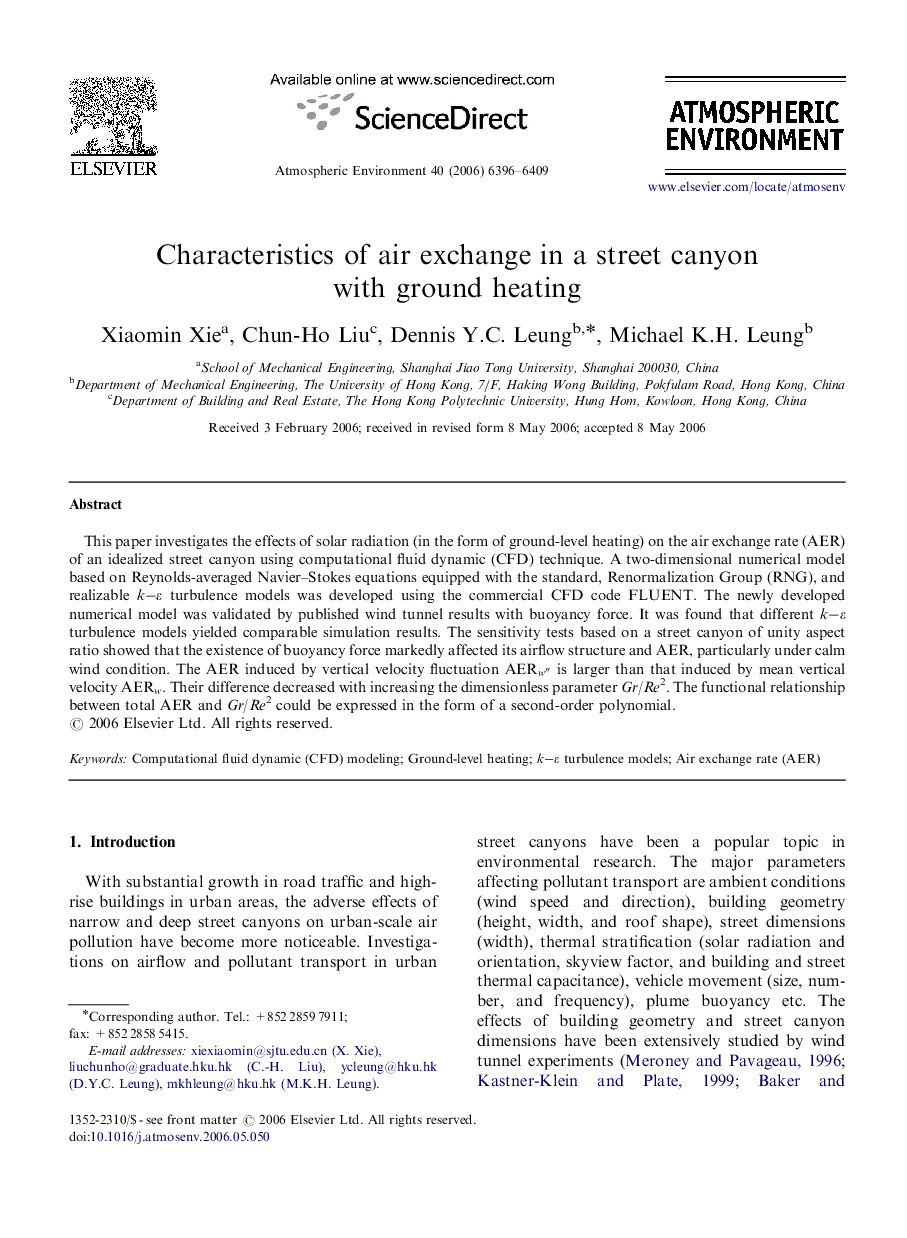| Article ID | Journal | Published Year | Pages | File Type |
|---|---|---|---|---|
| 4443831 | Atmospheric Environment | 2006 | 14 Pages |
Abstract
This paper investigates the effects of solar radiation (in the form of ground-level heating) on the air exchange rate (AER) of an idealized street canyon using computational fluid dynamic (CFD) technique. A two-dimensional numerical model based on Reynolds-averaged Navier-Stokes equations equipped with the standard, Renormalization Group (RNG), and realizable kâε turbulence models was developed using the commercial CFD code FLUENT. The newly developed numerical model was validated by published wind tunnel results with buoyancy force. It was found that different kâε turbulence models yielded comparable simulation results. The sensitivity tests based on a street canyon of unity aspect ratio showed that the existence of buoyancy force markedly affected its airflow structure and AER, particularly under calm wind condition. The AER induced by vertical velocity fluctuation AERwâ³ is larger than that induced by mean vertical velocity AERw. Their difference decreased with increasing the dimensionless parameter Gr/Re2. The functional relationship between total AER and Gr/Re2 could be expressed in the form of a second-order polynomial.
Related Topics
Physical Sciences and Engineering
Earth and Planetary Sciences
Atmospheric Science
Authors
Xiaomin Xie, Chun-Ho Liu, Dennis Y.C. Leung, Michael K.H. Leung,
